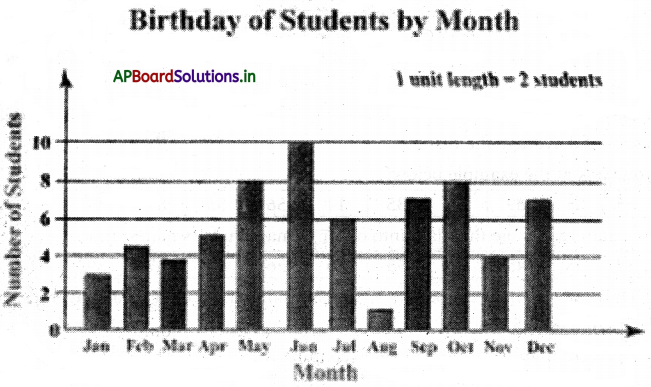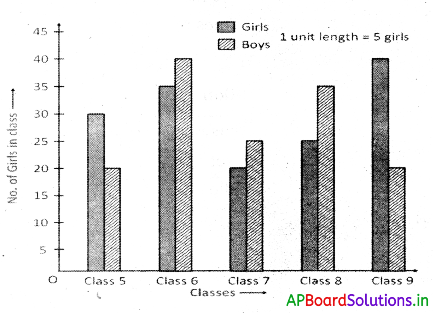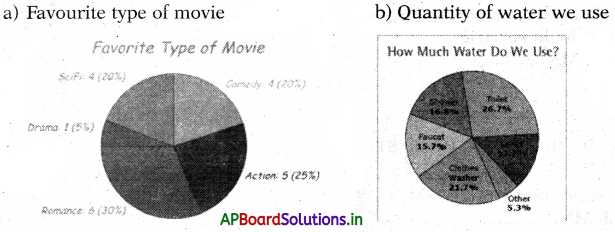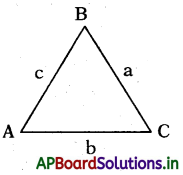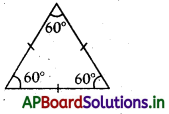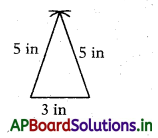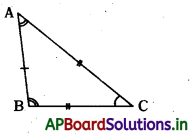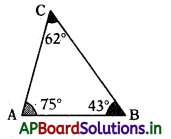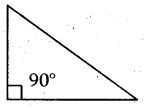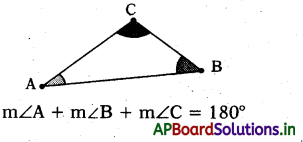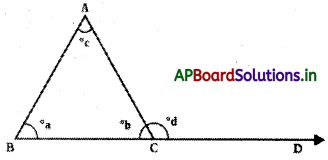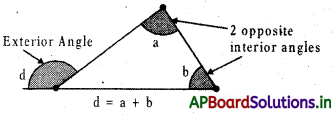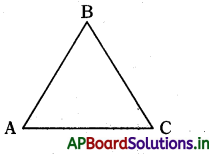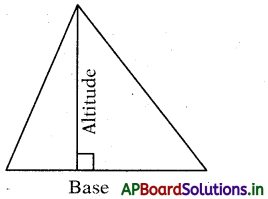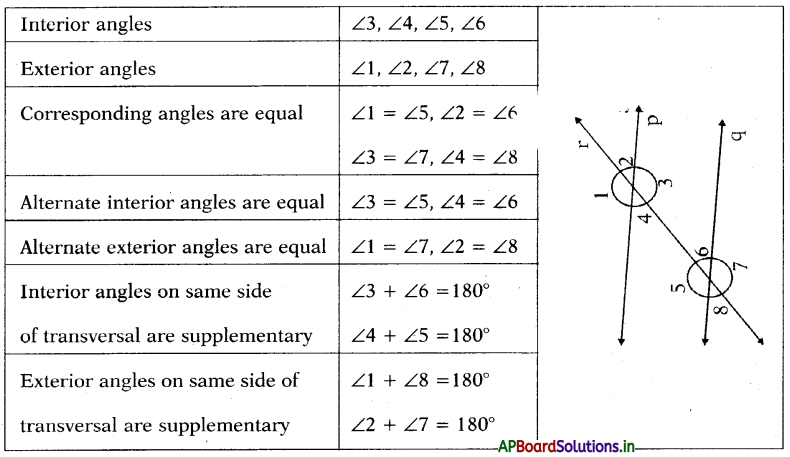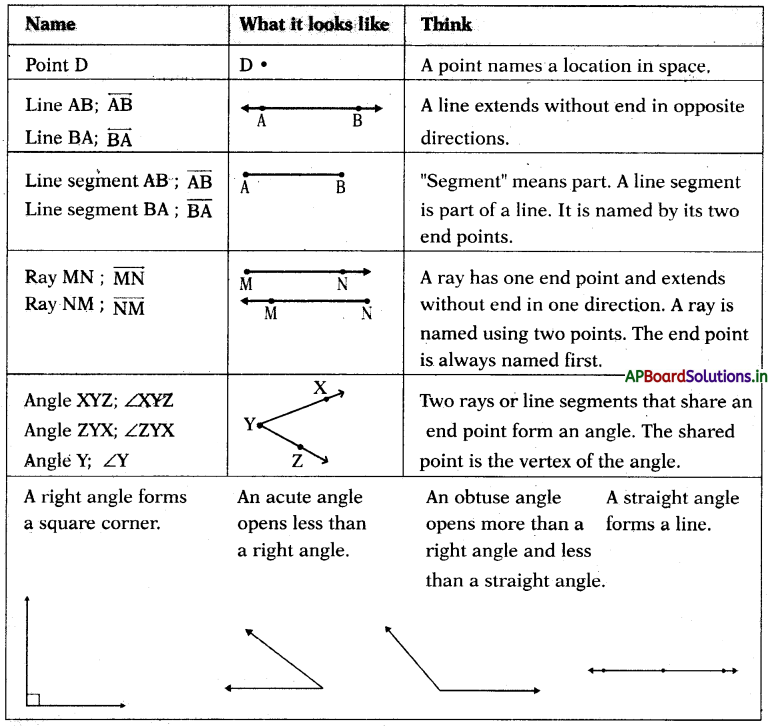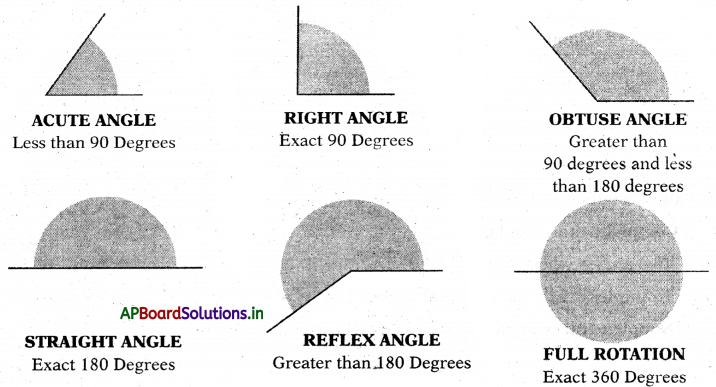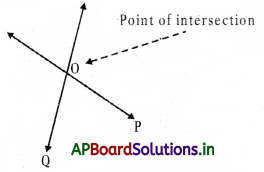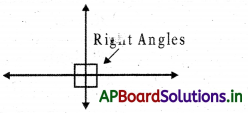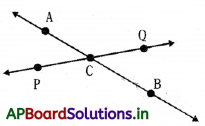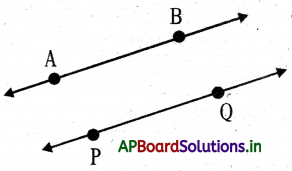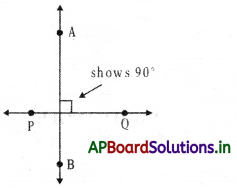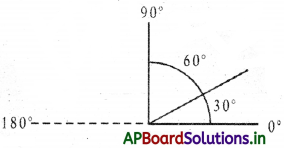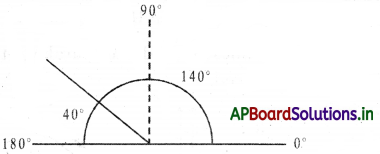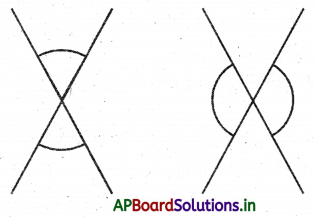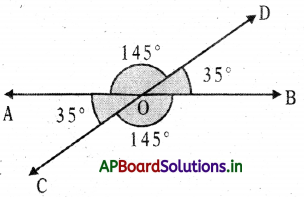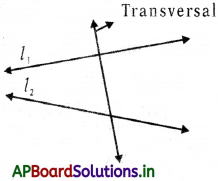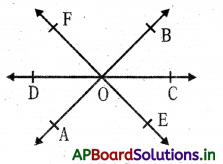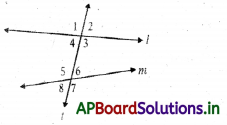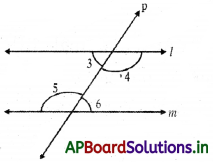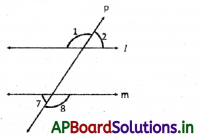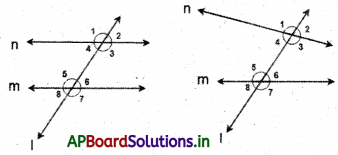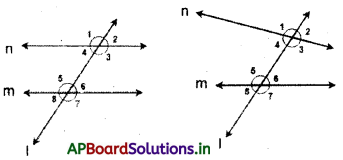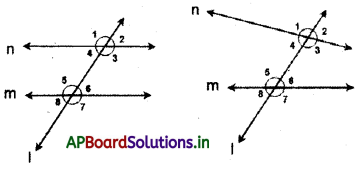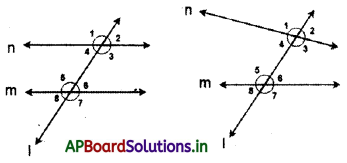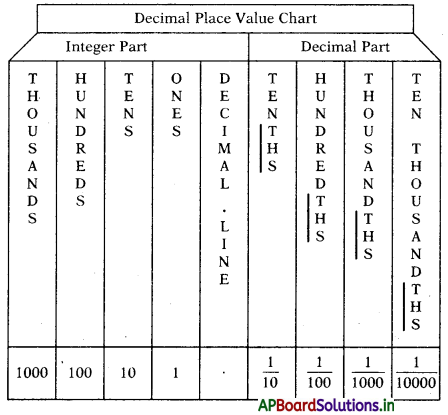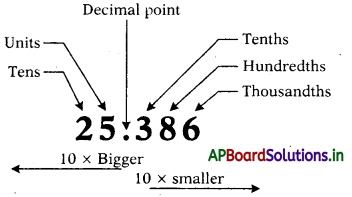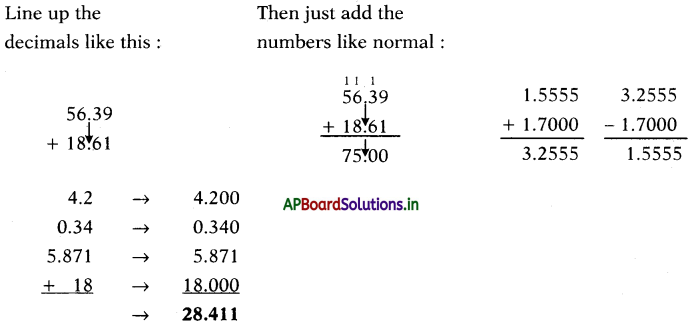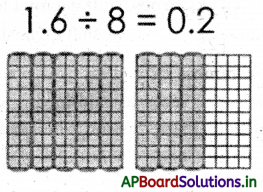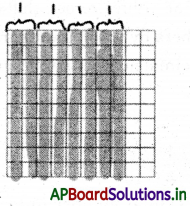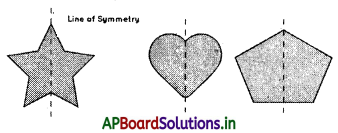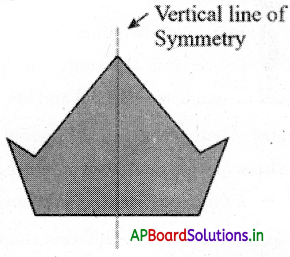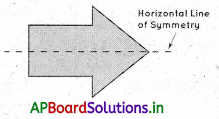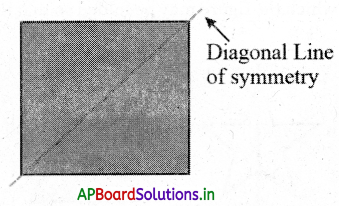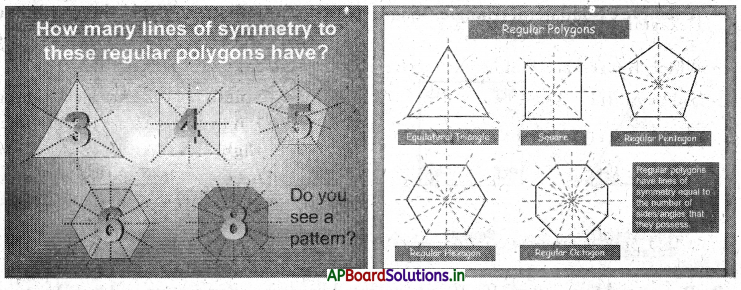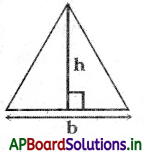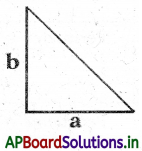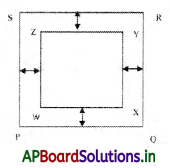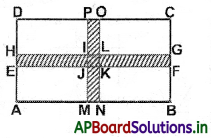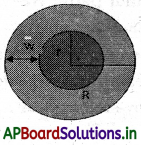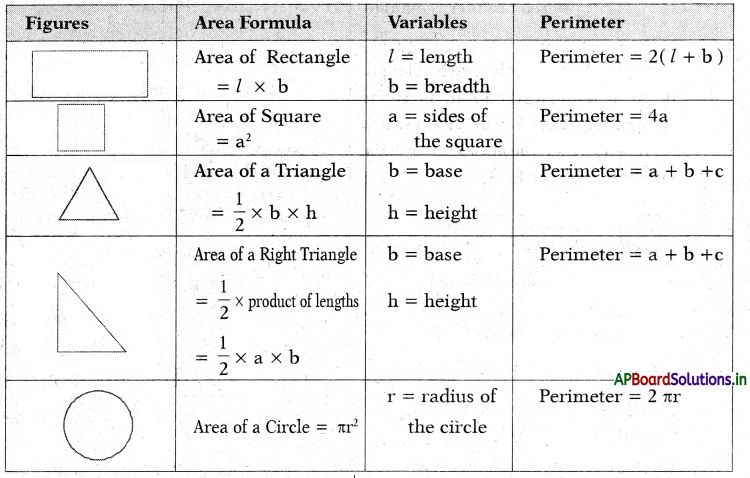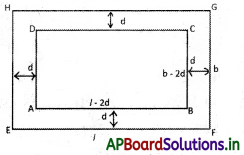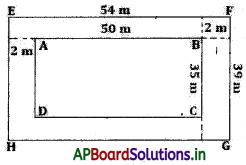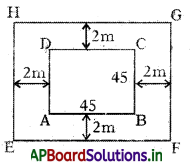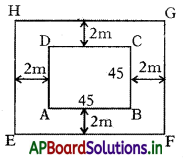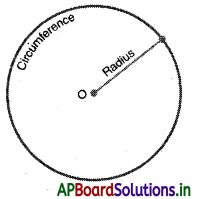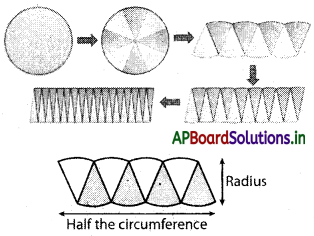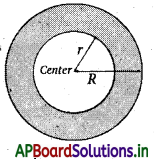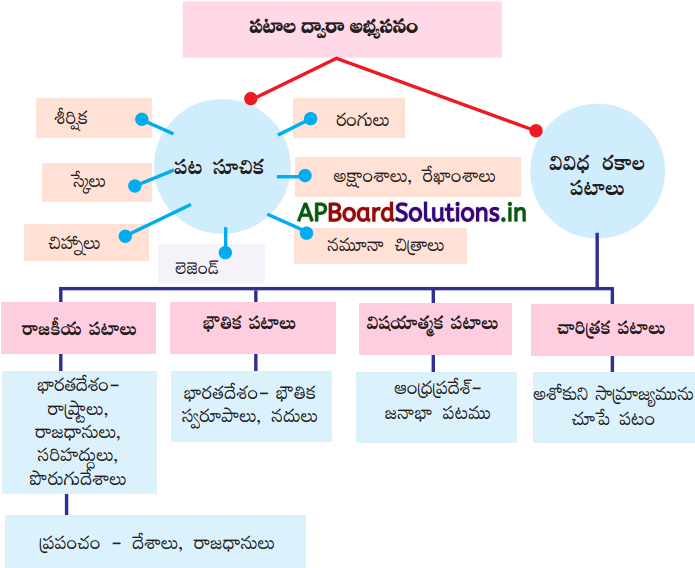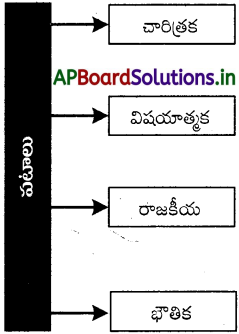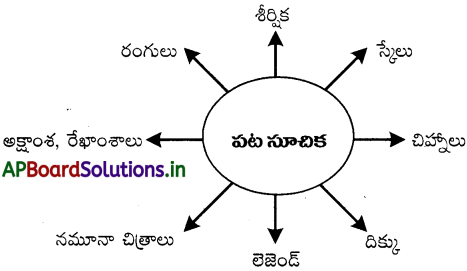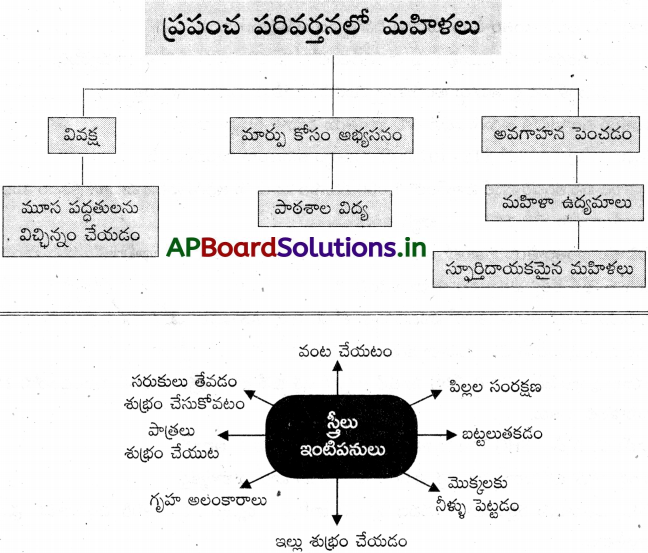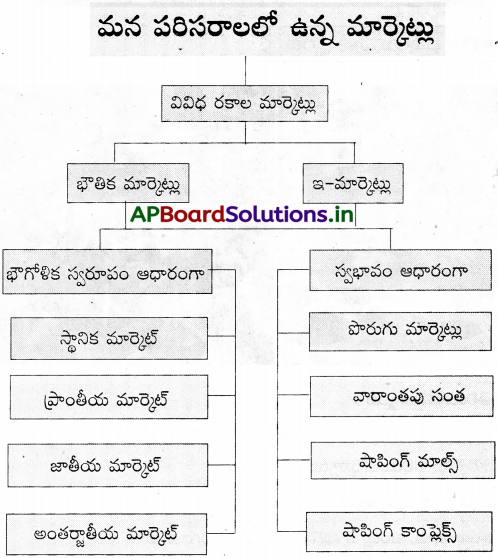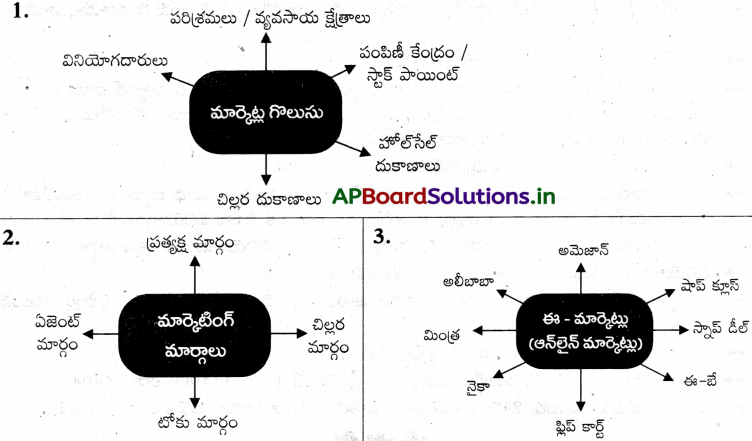Students can go through AP Board 7th Class Social Notes 2nd Lesson అడవులు to understand and remember the concept easily.
AP Board 7th Class Social Notes 2nd Lesson అడవులు
→ ఉష్ణోగ్రత, అవపాతం ఆధారముగా భూగోళ శాస్త్రవేత్తలు శీతోష్ణస్థితి మండలాలను నిర్వచించారు. వీరి ప్రకారం ప్రపంచంలో ఏడు శీతోష్ణ మండలాలు కలవు.
→ భూమధ్య రేఖకు ఇరువైపులా 5–10° ఉత్తర, దక్షిణ అక్షాంశాల మధ్య భూమధ్య రేఖ లేదా ఉష్ణ మండల శీతోష్ణస్థితి ప్రాంతం కలదు.
→ దట్టమైన అడవులతో ఉన్న ఈ (భూమధ్య రేఖ శీతోష్ణస్థితిని) ప్రాంతాన్ని సెల్వాలు అంటారు.
→ అమెజాన్లోని రెడ్ ఇండియన్లు, కాంగో పరీవాహకంలోని పిగ్మీలు వంటి ఆటవిక సమూహాలు ఈ ప్రాంతములో నివసిస్తున్నారు.
→ ‘సవన్నాలు’ భూమధ్యరేఖకు ఇరువైపులా 10°-20° ఉత్తర, దక్షిణ అక్షాంశాల మధ్య విస్తరించి ఉన్నాయి.
→ ‘ఎడారి ప్రాంతాలు’ ఖండాలకు పశ్చిమవైపున 15°-30° ఉత్తర, దక్షిణ అక్షాంశాల మధ్య విస్తరించి ఉన్నాయి.
→ ‘సహారా’ ఎడారి ప్రపంచంలోనే పెద్ద ఎడారి.
→ వేసవిలో పొడి వాతావరణము, శీతాకాలములో ఒక మాదిరి నుండి అధిక వర్షపాతం మధ్యధరా శీతోష్ణస్థితి ప్రాంతం యొక్క ప్రధాన లక్షణము.

→ అర్ధశుష్క ప్రాంతం (సమశీతోష్ణ) లో గడ్డిభూములు ‘స్టెప్పీలు’.
→ టైగా ప్రాంతం ఉత్తరార్ధ గోళంలో 559-70° ఉత్తర అక్షాంశాల మధ్య విస్తరించి ఉంది.
→ టైగా ప్రాంతం ప్రపంచంలో అధిక వాతావరణ వ్యత్యాసాలు కలిగి ఉన్న ప్రాంతాల్లో ఇది ఒకటి.
→ టైగా ప్రాంతంలో ‘ఫర్’ వాణిజ్యము ముఖ్యమైన మరియు ఆకర్షణీయమైన – కార్యకలాపము.
→ ఆర్కిటిక్ – ధృవ ప్రాంతాల మధ్య విస్తరించిన ‘టండ్రా’ ప్రాంతములో చలి చాలా ఎక్కువ.
→ ఒక ప్రదేశం యొక్క ఉష్ణోగ్రత, వర్షపాతం, నేలలు ఆ ప్రాంతం యొక్క వృక్షజాల రకాలను నిర్ధారిస్తాయి.
→ విశాల ప్రాంతంలో సహజ పరిస్థితులలో చెట్లు, పొదలతో కూడిన నిర్దిష్ట ప్రాంతాన్ని ‘అడవి’ అని పిలుస్తారు.
→ ఆదిమ జాతుల మనుగడకు అడవులు ప్రధాన స్థావరాలు.
→ భారత ప్రభుత్వము పరిపాలన సౌలభ్యం కొరకు అడవులను మూడు రకాలుగా విభజించింది. అవి రిజర్వు, రక్షిత, వర్గీకరించని అడవులు.
→ వేట, మేత వంటి కార్యకలాపాలను నేషిధించిన అడవులు రిజర్వు అడవులు.
→ ప్రత్యేక వృక్షజాలం, జంతు జాలాలను రక్షించటానికి ఏర్పాటు చేయబడ్డ అడవులు, రక్షిత అడవులు. వర్గీకరించని అడవులలో జీవనోపాధి కొరకు అవసరమైన అటవీ ఉత్పత్తులను సేకరించవచ్చు మరియు పశువులను మేపుకోవచ్చును.
→ అధిక సాంవత్సరిక ఉష్ణోగ్రత మరియు వర్షపాతం ఉన్న ప్రాంతాల్లో ‘సతతహరిత అరణ్యాలు’ పెరుగుతాయి.

→ ఈ అడవులు ఏడాది పొడవునా పచ్చగా ఉంటాయి.
→ హిమాలయ ప్రాంతాలు, ఈశాన్య రాష్ట్రాలు, పశ్చిమ కనుమలు, కేరళలోను ఈ అడవులు పెరుగుతాయి.
→ మహాగని, ఎబోని, రోజ్ వుడ్, ఐవరివుడ్ వంటి వృక్ష జాతులు ఈ అడవులలో పెరుగుతాయి.
→ వివిధ రకాల సరీసృపాలు, సింహపు తోక కోతి (లయన్ టెయిల్డ్ మకాక్), కీటకాలు ఈ అడవుల్లో ఉంటాయి.
→ ఆకురాల్చు అడవులు 70-200 సెం.మీ.. వర్షపాతము ఉన్న ప్రాంతాలలో విస్తరించి ఉన్నాయి.
→ ఆకురాల్చు అడవులు ద్వీపకల్ప పీఠభూమిలో ఎక్కువగా విస్తరించి ఉన్నాయి.
→ ఆకురాల్చు అడవుల్లో టేకు, సాల్, వెదురు, రోజ్ వుడ్, చందనం, వేప వృక్షాలు కనిపిస్తాయి.
→ ఆకురాల్చు అడవుల్లో పులులు, చిరుతలు, కుందేళ్ళు, జింకలు, నెమళ్ళు, పక్షులు ప్రధాన జంతుజాలం.
→ ఆకురాల్చు అడవుల్లోని వృక్షాలు వేసవి నెలల్లో బాష్పోత్సేకాన్ని తగ్గించడానికి ఆకులు రాల్చుతాయి.
→ ముళ్ళ/పొద అడవులు తక్కువ వర్షపాతం వుండి, అధిక ఉష్ణోగ్రత ఉన్న ప్రాంతాల్లో పెరుగుతాయి.
→ ముళ్ళపొద అడవుల్లోని చెట్లు ముళ్లతోనూ, పొదలుగానూ ఉంటాయి.
→ ముళ్ళపొద అడవులు దక్కన్ పీఠభూమి, భారతదేశ ఎడారి ప్రాంతాల్లో ఉన్నాయి.
→ ముళ్ళ/పొద అడవుల్లో అకేషియా, బ్రహ్మ జెముడు, నాగజెముడు, బబుల్ మరియు రేగు వృక్ష జాతులు కలవు.
→ మడ/తీర ప్రాంతపు అడవులను చిత్తడి అడవులు అని కూడా అంటారు.
→ మడ/తీర ప్రాంతపు అడవుల్లోని చెట్లు సముద్రపు లవణీయతను, అలల తాకిడిని తట్టుకునేలా ఉంటాయి.
→ మడ/తీర ప్రాంతపు అడవుల్లో తెల్లమడ, సుందరి, పొన్న, బొడ్డుపొన్న మొదలగు వృక్షాలు పెరుగుతాయి.
→ మడ/తీర ప్రాంతపు అడవుల సమీపంలో చేపలు విరివిగా దొరుకుతాయి.
→ పశ్చిమ బెంగాల్ లోని సుందర్బన్ ప్రాంతాలలో ఈ మడ అడవులు విస్తరించి ఉన్నాయి.
→ పర్వత ప్రాంత అడవులు పర్వతాలు మరియు కొండ ప్రాంతాలలో పెరుగుతాయి.
→ పర్వత ప్రాంత అడవుల్లోని వృక్షాల ఆకులు సన్నని సూది ఆకారంలోనూ, త్రిభుజాకారంలోనూ ఉంటాయి.
→ హిమాలయ ప్రాంతంలో వివిధ రకాలైన శృంగాకారపు అడవులు ఉన్నాయి.
→ స్పర్, ఫర్, విల్లో, దేవదారు, సిల్వర్ ఫర్ మొదలైన వృక్షాలు ఈ అడవుల్లో ఉన్నాయి.
→ ధృవపు జింక, మంచు చిరుత ఇక్కడ ప్రధాన జంతు జాలము.

→ ISFR – ఇండియన్ స్టేట్ ఫారెస్ట్ రిపోర్టు.
→ ISFR – 2019 ప్రకారం భారతదేశములో 8,07,276 చ.కి.మీ. విస్తీర్ణం మేర భూమి అటవీ ప్రాంతములో కప్పబడి ఉంది.
→ మొత్తము భూభాగములో 24.56% ప్రపంచ అటవీ విస్తీర్ణంలో భారతదేశం 10వ స్థానంలో ఉంది.
→ జాతీయ అటవీ విధానం 1952 ప్రకారం మొత్తం భూభాగంలో 33%, మైదాన ప్రాంతాలలో 20%, కొండ ప్రాంతాలలో 60% విస్తీర్ణం గల భూమి అడవుల క్రింద ఉండాలి.
→ విస్తీర్ణ పరంగా మధ్యప్రదేశ్ రాష్ట్రం అత్యధిక అటవీ ప్రాంతాన్ని కల్గి ఉండగా అరుణాచల్ ప్రదేశ్ రెండవ స్థానంలో, హర్యానా చివరి స్థానంలోను ఉన్నాయి.
→ భారతదేశం 3.28 మిలియన్ చ.కి.మీ. విస్తీర్ణం, 30 డిగ్రీల అక్షాంశాల విస్తృతి కల్గి ఉంది.
→ భారతదేశం ఉత్తరం నుంచి దక్షిణానికి మధ్య దూరం 3,214 కి.మీ.లు.
→ భారత జాతీయ అటవీ నివేదిక-2019 ప్రకారం ఆంధ్రప్రదేశ్ రాష్ట్రం 37,392 చ.కి.మీ. విస్తీర్ణం అనగా మొత్తం విస్తీర్ణంలో 22.94% అటవీ ప్రాంతాన్ని కల్గి ఉంది.
→ YSR కడప జిల్లా అత్యధిక అటవీ ప్రాంతంతోను, కృష్ణాజిల్లా అత్యల్ప అటవీ ప్రాంతాన్ని కల్గి ఉంది.
→ సాంద్రత రీత్యా విశాఖపట్టణం జిల్లా మొదటి స్థానంలోను, కృష్ణాజిల్లా చివరి స్థానంలోనూ ఉంది.
→ ఆంధ్రప్రదేశ్ లో అడవులు ఉత్తరాన సింహాచలం కొండల నుండి దక్షిణాన శేషాచలం కొండల వరకు విస్తరించి ఉన్నాయి.
→ నల్లమల అడవి అతి పెద్ద అటవీ ప్రాంతం.
→ తేమతో కూడిన ఆకురాల్చు అడవులు శ్రీకాకుళం, విజయనగరం, తూర్పు గోదావరి జిల్లాల్లో కలవు.
→ తేమతో కూడిన ఆకురాల్చు అడవుల్లో వేగి, ఏగిస, వెదురు, మద్ది, బండారు – జట్టేగి మరియు సాల వృక్షాలు పెరుగుతాయి.
→ శుష్క ఆకురాల్చు అడవులు YSR కడప, కర్నూలు, అనంతపురం, చిత్తూరు జిల్లాల్లో కలవు.
→ శుష్క ఆకురాల్చు అడవుల్లో ముఖ్య వృక్షాలు మద్ది, టేకు, బిల్లు, వెలగ, ఏగిస, వేప, బూరుగ, మోదుగ మరియు ఎర్రచందనం.
→ ఎర్రచందనం కడప, చిత్తూరు జిల్లాల్లోని శేషాచలం అడవుల్లో పెరిగే అరుదైన వృక్షజాతి. ఎగుమతుల్లో ఆర్థిక వ్యవస్థలో ఈ వృక్షానికి విశేష స్థానం ఉంది.
→ చిట్టడవులు రాయలసీమ జిల్లాలయిన కడప, కర్నూలు, అనంతపురం, చిత్తూరు జిల్లాల్లో పెరుగుతాయి.

→ ‘చిట్టడవుల్లో తుమ్మ, బులుసు, రేగు, చందనం, వేప మొదలగు చెట్లు పెరుగుతాయి. కడప జిల్లాలోని శ్రీలంక మల్లేశ్వర అభయారణ్యంలో నివసించే ‘కలివికోడి’ని IUCN అరుదైన జాతులుగా తెలియజేసింది.
→ మడ/డెల్టా అడవులు ఆంధ్రప్రదేశ్ తీర ప్రాంతం 974 కి.మీ. ఈ తీరం వెంబడి ఈ అడవులున్నాయి.
→ మడ/డెల్టా అడవుల్లో, ఉప్పు పొన్న, బొడ్డు పొన్న, ఉరడ, మడ, తెల్లమడ, పత్రి తీగ, బలబండి తీగ చెట్లు ఇక్కడ పెరుగుతాయి.
→ తూర్పు గోదావరిలోని ‘కోరంగి’ ప్రాంతం మడ అటవీ ప్రాంతానికి చక్కని ఉదాహరణ. వృక్షజాలం, జంతుజాలాలను రక్షించటానికి 13 వన్యప్రాణుల అభయారణ్యాలు మరియు మూడు జాతీయ ఉద్యానవనాలు ఆంధ్రప్రదేశ్ లో స్థాపించబడ్డాయి.
→ బోండోలు, చెంచులు, కొండరెడ్లు, కొండ సవరలు, గోండ్లు, ఎరుకల మరియు యానాదులు ఆదిమజాతులవారు.
→ చెంచులు ఒక ఆదిమ తెగ, వీరు నల్లమల అడవిలో ఉంటారు.
→ బ్రిటీషు వారు 1864లో అటవీశాఖను ఏర్పాటు చేశారు.
→ 1988 జాతీయ అటవీ విధాన ప్రకటన వన సంరక్షణ , పునరుజ్జీవనం, అడవుల అభివృద్ధిలో గిరిజన భాగస్వాములను చేయడం అనేది ముఖ్యమైన అంశంగా ప్రకటించింది.
→ ప్రస్తుతం ఆంధ్రప్రదేశ్ స్థానిక గిరిజనులను భాగస్వామ్యం చేస్తూ ఎకో-టూరిజం విధానాన్ని బలోపేతం చేసింది.
→ బంజరు భూముల్లో, ఇతర ప్రదేశాలలో మొక్కలు నాటడం, అడవులను సంరక్షించడం ద్వారా పర్యావరణాన్ని సామాజిక మరియు గ్రామ అభివృద్ధులను పెంపొందించడం కోసం చేపట్టిన పథకాన్ని “సామాజిక అడవుల” పెంపకం అనవచ్చు.
→ 1894 – అడవుల చట్టం, 1950 – అడవుల పండుగ.
1952 – జాతీయ అటవీ విధానం, 1980 – వన సంరక్షణ చట్టం.
2006 – అటవీ హక్కుల చట్టం.
→ FPST – అటవీ నివాస షెడ్యూల్డ్ తెగలు.
OTFD – ఇతర సాంప్రదాయ అటవీ నివాసులు.
→ అడవుల ఉపయోగాలను నాలుగు రకాలుగా వర్గీకరించవచ్చును. అవి :
1) వినియోగం కొరకు
2) వాణిజ్యం కొరకు
3) పర్యావరణ వ్యవస్థల సమతుల్యం
4) పరిశోధనలు
→ సామాజిక, ఆర్థిక, మత, సాంస్కృతిక, మాండలిక సారూప్యాలు కలిగిన కుటుంబాలలో సంప్రదాయ సమూహాలుగా ఉన్న సామాజిక విభాగాన్ని ‘అటవీ జాతి’ అంటారు.
→ సెల్వాలు : దట్టమైన అడవులతో ఉన్న (భూమధ్య రేఖా ప్రాంతము) ప్రాంతం.
→ పోడు వ్యవసాయం : అడవులను కొంత మేరకు నరికి, కాల్చి గిరిజనులు చేయు వ్యవసాయం.
→ సవన్నాలు : ఉష్ణ మండలపు గడ్డి మైదానాలను సవన్నాలు అంటారు.
→ వాణిజ్య వ్యవసాయం : లాభం కోసం చేసే విస్తార వ్యవసాయం.
→ స్టెప్పీలు : సమశీతోష్ణ మండలపు గడ్డి భూములను స్టెప్పీలు అంటారు.
→ రిజర్వు అడవులు : వేట, మేత నిషేధించిన అడవులు.
→ రక్షిత అడవులు : ప్రత్యేక వృక్షజాలం, జంతు జాలాలను రక్షించటానికి ఏర్పాటు చేయబడ్డ అడవులు.
→ సతతహరిత అడవులు : ఏడాది పొడవునా పచ్చగా ఉండే అడవులు. . * చిత్తడి అడవులు : తీర ప్రాంతపు, మడ అడవులు.
→ ISFR : ఇండియన్ స్టేట్ ఫారెస్ట్ రిపోర్ట్.
→ ఎకో టూరిజం : (పర్యావరణ పర్యాటకం) సామాజిక ఆధారిత పర్యావరణ కేంద్రాల సందర్శనకై ఆంధ్రప్రదేశ్ ప్రభుత్వం ఏర్పాటు చేసిన నూతన విధానం.
→ IUCN : ప్రకృతి మరియు సహజ వనరుల పరిరక్షణ కోసం అంతర్జాతీయ యూనియన్.
→ FDST : అటవీ నివాస షెడ్యూల్డ్ తెగలు.
→ OTFD : ఇతర సాంప్రదాయ అటవీ నివాసులు.
→ అడవి : విశాల ప్రాంతంలో సహజ పరిస్థితులలో చెట్లు, పొదలతో కూడిన నిర్దిష్ట ప్రాంతం.
→ వృక్షజాలం : ఒక ప్రత్యేకమైన ప్రాంతంలో పెరిగే మొక్కలు.
→ జంతుజాలం : ప్రత్యేకమైన ప్రాంతంలో నివసించే జంతువులు.
→ దట్టమైన అరణ్యం : ఒక ప్రాంతంలో చెట్లు దగ్గర దగ్గరగా పెరగడం.
→ శీతోష్ణస్థితి : ఒక ప్రదేశంలోని దీర్ఘకాలపు సగటు వాతావరణపు స్థితి.

→ బాష్పోత్సేకం : చెట్ల నుంచి నీరు ఆవిరి కావడం.
→ సుందరవనాలు : పశ్చిమ బెంగాల్ లో పెరిగే మడజాతి వనాలు.
→ శృంగాకారపు చెట్లు : సూది ఆకారం ఆకులు గల పొదలు.
→ పట్టణీకరణ : ప్రజలు గ్రామీణ ప్రాంతాల నుంచి పట్టణాలకు వలస వెళ్లడం.
→ ఆదిమ వాసులు : ఒక ప్రాంతంలో ప్రాచీన కాలం నుండి నివసించేవారు.
→ భూగోళం వేడెక్కడం : భూ ఉపరితలం వేడెక్కడం.
→ నేల క్రమక్షయం : భూమి యొక్క పై పొరలు క్రమంగా తొలగించబడడం.
1.
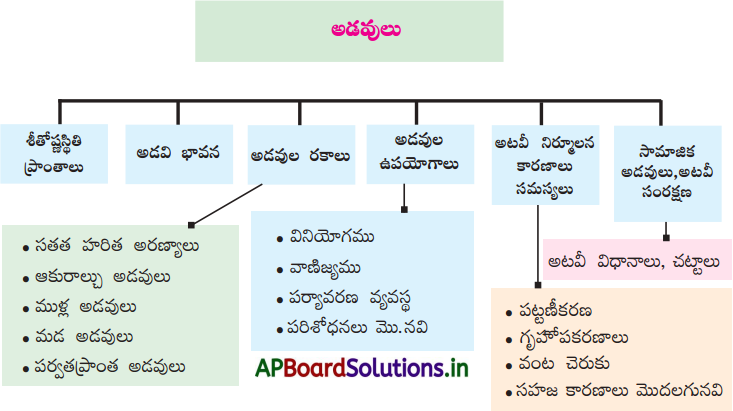
2.
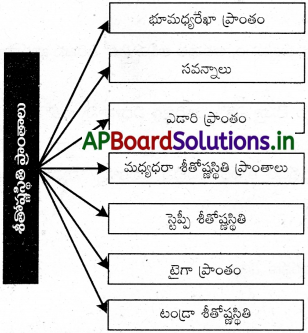
3.
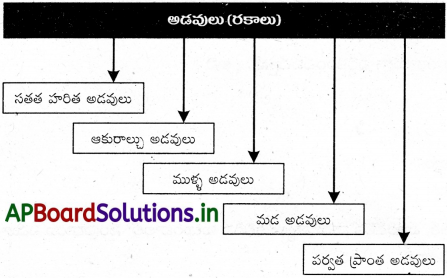
![]()
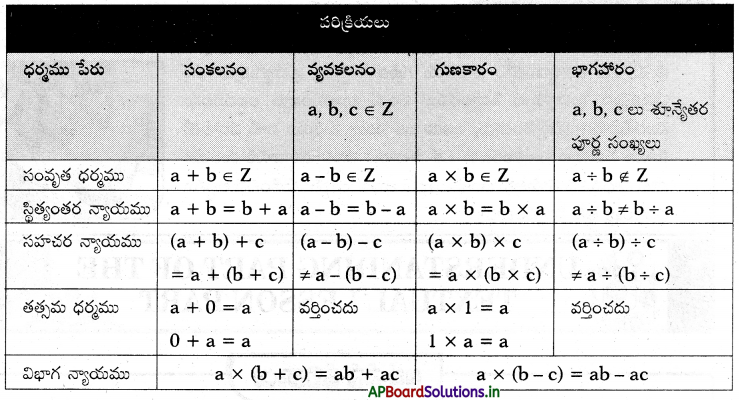
![]()
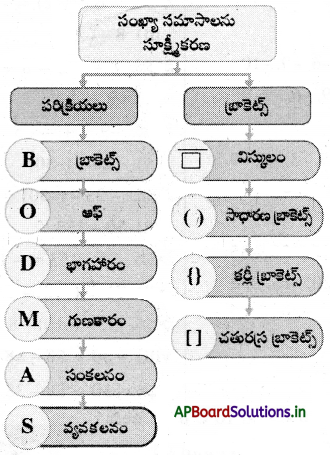
![]()



